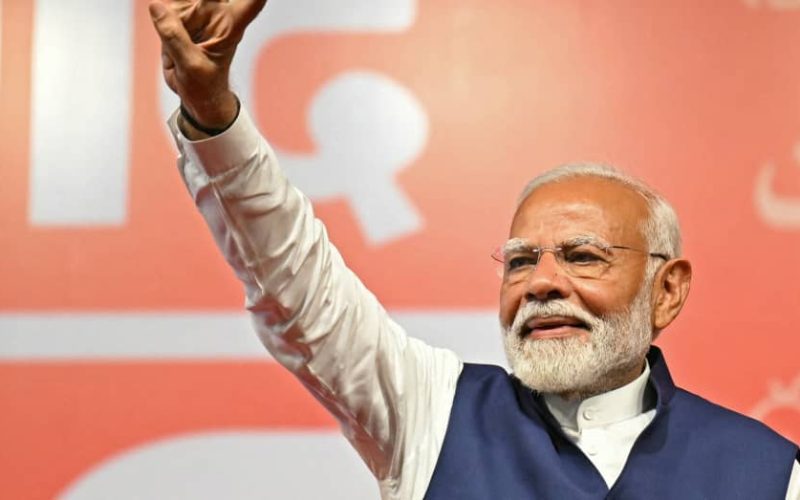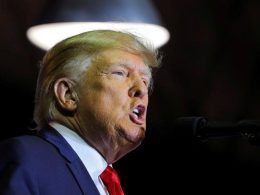In an unexpected turn of events, recent election results have indicated that Prime Minister Narendra Modi and his Bharatiya Janata Party (BJP) are set to lose their majority in the Indian Parliament. This development has sent shockwaves through the political landscape of India, raising questions about the future direction of the country’s governance. This article delves into the causes, implications, and potential consequences of this surprising election outcome.
Background: The Rise of Modi and the BJP

Narendra Modi, a prominent figure in Indian politics, rose to power in 2014 with a promise of economic reforms, national security, and a vision of a prosperous India. The BJP, under his leadership, secured a sweeping victory, winning a majority in the Lok Sabha, the lower house of India’s Parliament. Modi’s charismatic leadership and the party’s strong campaign strategies led to a repeat victory in 2019, further consolidating their hold on Indian politics.
Causes of the Shock Election Result
Several factors have contributed to the BJP’s unexpected decline in popularity and the resulting election outcome:
Economic Challenges
Despite initial promises, the Indian economy has faced significant challenges under Modi’s leadership. Issues such as unemployment, inflation, and slowing economic growth have created widespread discontent among the electorate. The COVID-19 pandemic further exacerbated these problems, leading to economic hardship for many Indians.
Social and Political Issues
Modi’s tenure has also been marked by controversial policies and social issues. The Citizenship Amendment Act (CAA) and the National Register of Citizens (NRC) sparked nationwide protests, raising concerns about discrimination against minority communities. Additionally, the handling of farmers’ protests against new agricultural laws led to further disillusionment among key voter bases.
Opposition Unity
The opposition parties, historically fragmented and disorganized, managed to unite against the BJP in this election. By forming strategic alliances and presenting a united front, they were able to effectively challenge the BJP’s dominance. This unity was crucial in swaying voter sentiment and consolidating anti-BJP votes.
Implications for Indian Politics
The loss of majority by the BJP has significant implications for the political landscape in India:
Coalition Government
With no single party securing a majority, India is likely to see the formation of a coalition government. This will necessitate negotiations and compromises among various political parties, leading to a more complex and potentially unstable government structure.
Policy Revisions
A coalition government will likely bring changes to existing policies. The new administration may review and revise several of Modi’s key initiatives, including economic policies, agricultural reforms, and social legislation. This could lead to a period of policy uncertainty and adjustment.
Regional Parties’ Influence
Regional parties, which have gained considerable seats, will play a crucial role in the coalition government. Their influence will grow, and they will demand significant concessions and power-sharing arrangements, shifting the focus to regional issues and concerns.
Comparative Analysis: Election Results 2019 vs. 2024
To understand the magnitude of this shift, it is essential to compare the election results of 2019 and 2024. The table below outlines key metrics from both elections:
| Metric | 2019 Election | 2024 Election |
|---|---|---|
| Total Seats in Lok Sabha | 543 | 543 |
| BJP Seats | 303 | 230 |
| Congress Seats | 52 | 150 |
| Other Parties’ Seats | 188 | 163 |
| Voter Turnout (%) | 67.4 | 70.2 |
Analysis of Voter Sentiment
Decline in BJP Support
The BJP saw a significant reduction in its seats from 303 to 230, reflecting a decline in voter support. This drop can be attributed to the economic and social challenges faced during Modi’s tenure. The party’s inability to address key issues effectively led to voter dissatisfaction.
Surge in Congress Seats
The Indian National Congress, the main opposition party, witnessed a substantial increase in its seats from 52 to 150. This resurgence highlights the effectiveness of their campaign strategies and their ability to capitalize on the BJP’s weaknesses. The Congress party’s focus on economic issues and promises of inclusive governance resonated with a broad section of the electorate.
Role of Other Parties
The role of regional and smaller parties remains significant, though their combined seat count saw a slight decrease. These parties have maintained their influence and will be pivotal in the formation of the new government. Their ability to negotiate and form alliances will be crucial in the coming months.
Potential Consequences for Governance
Economic Policies
The new coalition government will likely adopt a different approach to economic policies. There may be a shift towards more inclusive growth strategies, focusing on job creation, social welfare, and rural development. This change in direction could lead to a re-evaluation of existing economic reforms and initiatives.
Social Harmony
The handling of social issues will be a critical area of focus for the new government. Efforts to address concerns related to minority rights, social justice, and communal harmony will be crucial in restoring public trust and ensuring stability.
Foreign Policy
India’s foreign policy might also see adjustments, with the new government potentially adopting a more balanced and multi-faceted approach. Relations with neighboring countries and major global powers will be re-examined, aiming to enhance India’s strategic position and economic partnerships.
Conclusion
The shock election result, indicating that Modi and the BJP are set to lose their majority, marks a significant turning point in Indian politics. This outcome reflects the electorate’s response to economic challenges, social issues, and the effectiveness of opposition unity. The formation of a coalition government and the subsequent policy changes will shape India’s future trajectory. As the nation navigates this new political landscape, the focus will be on addressing key challenges, ensuring stability, and fostering inclusive growth.
Comparative Table: Key Political Metrics
| Aspect | Modi Government (2019-2024) | Potential Coalition Government (2024 Onwards) |
|---|---|---|
| Economic Growth | Moderate, with fluctuations | Uncertain, potential shift to inclusive growth |
| Unemployment Rate | High | Aim to reduce through job creation policies |
| Social Policies | Controversial, divisive | Focus on social harmony and inclusivity |
| Foreign Relations | Assertive, strategic partnerships | Balanced, re-evaluation of existing alliances |
| Governance Style | Centralized, strong leadership | Collaborative, coalition-driven |
In summary, the upcoming political changes in India signal a period of transformation and adaptation. The challenges ahead are significant, but so are the opportunities for reshaping the country’s future. The electorate’s decision in this election underscores the dynamic and evolving nature of Indian democracy.












